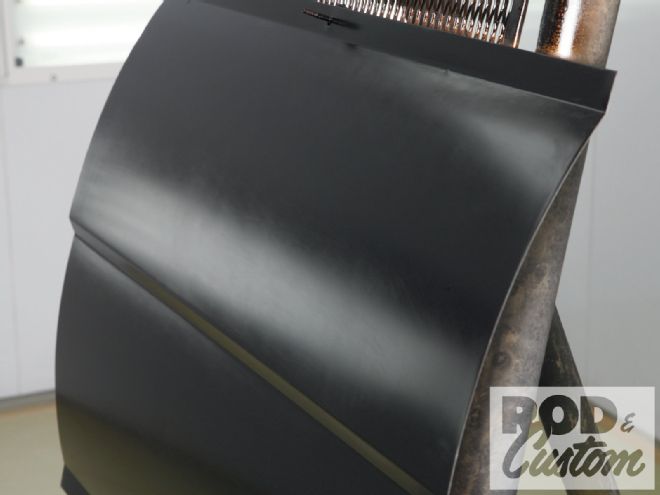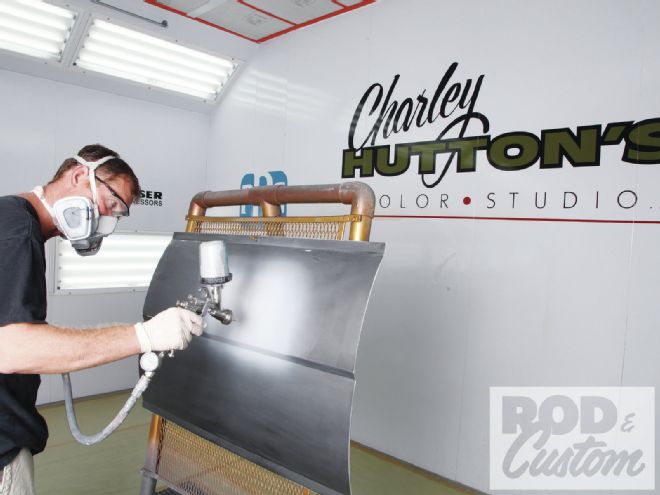
A few months back we showcased PPG’s entry in the waterborne paint field. If you haven’t read it or don’t have a reference handy, here’s the gist: waterborne paints promise to make color coats as easy to apply as the lacquer many of us grew up shooting. They require only thinning, the finishes air dry alarmingly quickly, they can be repaired within minutes, and the excess can literally be reused months later when stored in an air-tight plastic container. In fact, waterborne basecoats resemble lacquers in pretty much all ways but two: they’re more durable and they don’t stink.
At the time we hinted at PPG’s next release: a waterborne primer. We shot some photos of it in action, but considering the company hadn’t officially released it yet, we had to keep somewhat tight lipped about it.
Well in the meantime PPG took that product to market. It refers to it as Waterborne Speed Prime (PN EPW115) primer surfacer. And while we thought it was pretty snazzy at the time, we had no idea just how cool it was.
At the time Charley Hutton was using it as a surfacer over prepared panels (primers and existing painted surfaces). And in that application it was truly awesome. Drying intervals included, it took a little more than 10 minutes to build about 3 mils of coating and 30 minutes after the last coat flashed it was ready to sand. By comparison, solvent-based primer surfacers like the ever-popular K36 require dry times on the order of hours prior to sanding. And because EPW115 has a 24-hour pot life we didn’t have to scramble to clean the gun. Try that with 2K primers and you’ll end up with an expensive paperweight.
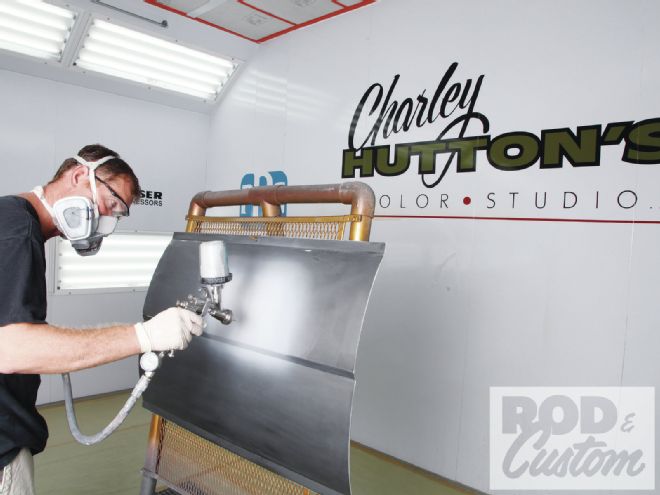
Then PPG went and did something totally unexpected: it announced that EPW115 can be applied directly to metal. Not prepped metal or etched metal, bare metal. I suppose I don’t need to point out the obvious but I will anyway: steel rusts in the presence of water and EPW115 is a waterborne product.
How PPG did it was by adding a rust inhibitor that protects bare steel. EPW115 primer surfacer can also be applied directly to aluminum and galvanized metals without the need of an etch primer or metal conditioner. Because PPG formulated EPW115 to work with epoxy and polyester, it can be applied directly over bare and gel-coated fiberglass and conventional body fillers. However, just as it does with its urethane primers, PPG recommends treating other bare plastic surfaces with an adhesion promoter prior to applying EPW115.
The Envirobase High-Performance Waterborne Basecoat that we showcased earlier applies directly over dried and sanded EPW115 without any additional sealer. While PPG designed it to work seamlessly with its waterborne finishes, EPW115 accepts PPG’s Solventborne Global-Series Basecoats when coated with the appropriate sealer.
PPG recommends EPW115 for small- to medium-size spot repairs. This repair scale, combined with the application process, reduces priming cycle time to as few as 30 minutes, including the flashing steps between coats. However, based on the market’s demand and PPG’s ability to address it, we suspect the company will either tweak this formula or introduce a new waterborne primer for larger and/or overall applications. If experience is any guide, all paint manufacturers are treading conservatively.
Whatever the case, the industry is poised for even more radical changes. If the rumors bear any sort of weight, prepare for the other finish deemed impossible until recently: a waterborne clearcoat. And based on what we’ve learned recently, it’s not a matter of if but when we’ll have a comprehensive, clean, odor-free, and truly user-friendly waterborne paint system at our disposal.
1. Charley Hutton began with a panel with localized damage. It didn’t dent the metal but it violated the topcoat and dug into the underlying primer. PPG recommends 180- to 280-grit paper to prep bare metal and 320- to 400-grit paper to prep existing finishes.
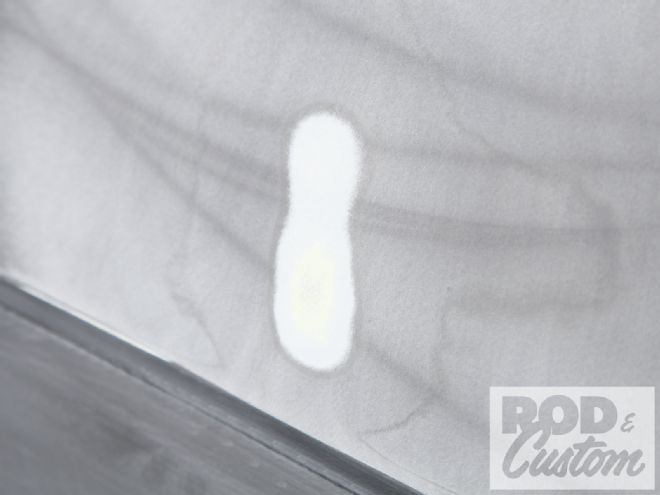
2. As he did for the waterborne paint article, Hutton washed the panel first with DX394 water-based cleaner to remove crystalline contaminates and finished with DX330 to remove wax and grease residue.
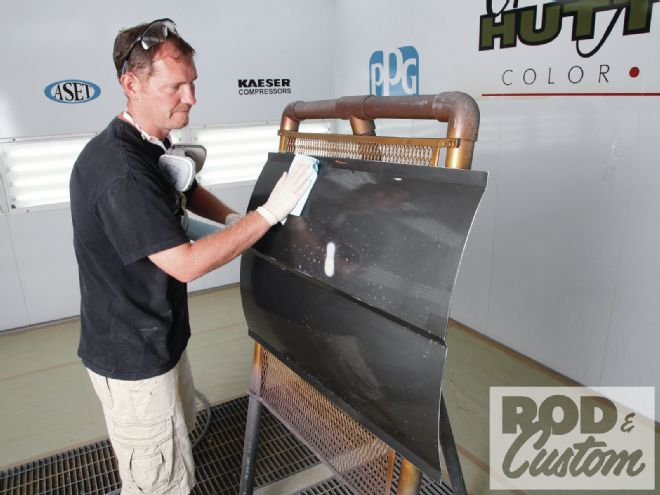
3. Embracing waterborne primers means kicking the can … literally. EPW115 Waterborne Speed Prime comes in resealable bottles.
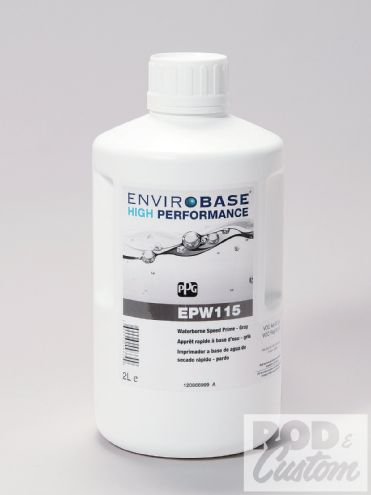
4. T494 reduces EPW115. PPG indicates EPW can be reduced 13 percent by volume but recommends reducing 10 percent by weight. Excess material will preserve if resealed in a bottle but it’s best to dedicate another container to reduced material.
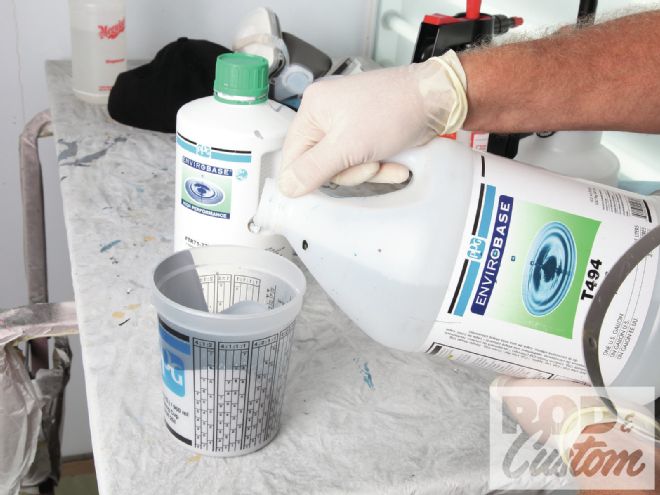
5. PPG recommends relatively light coats (0.8-1 mil) with a 1.6-1.9mm fluid tip. Hutton intentionally oversized his first coat.
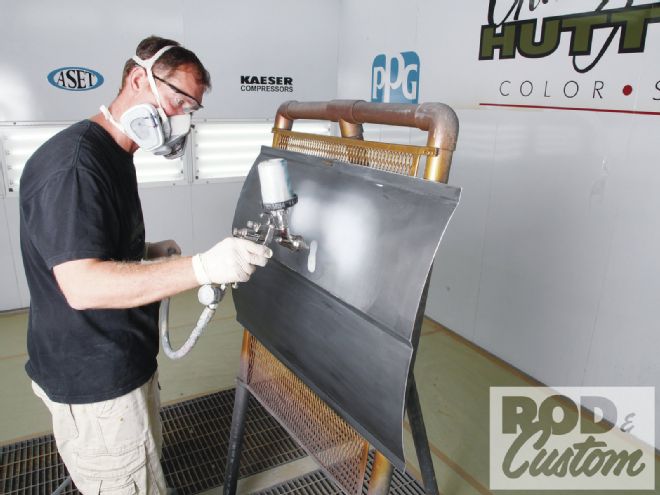
6. Though PPG advises using air-drying equipment, it discourages using a spray gun for the purpose. Hutton used a TriggerJet 22650PP, a small, lightweight, and low-cost tool no would-be waterborne painter should be without.
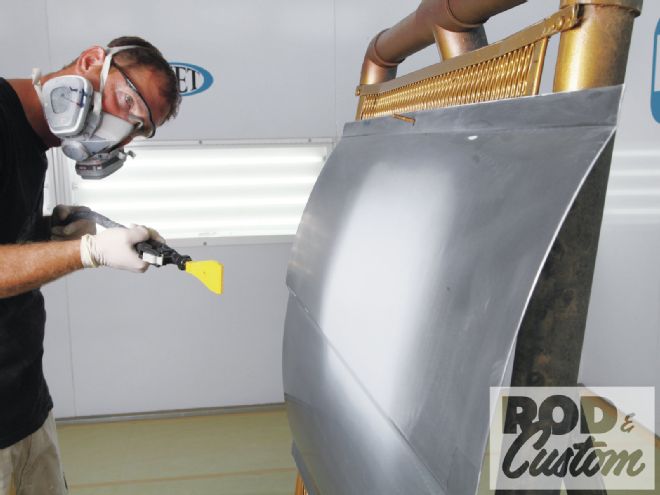
7. Using the spray/dry process, Hutton applied two more coats using the reverse priming method, each coat smaller than the last. The technique builds material progressively thicker to match the feathered area, thereby reducing the sanding process and conserving materials. The quarter indicates the gradient from the existing finish (left) to the primed (right).
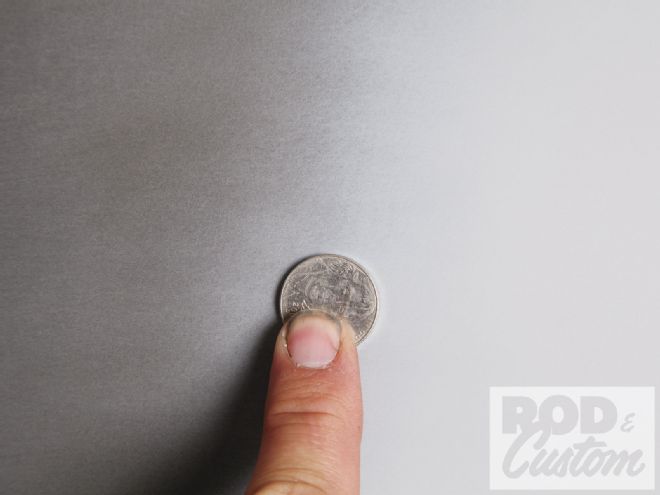
8. EPW115 can be knocked down rapidly with coarser abrasives but PPG recommends finishing with at least 500-grit paper. Hutton finished with 600-grit paper. Incidentally, he discourages wet-or-dry paper, saying that he achieves better results by using paper designed for dry applications (DA paper, for example).
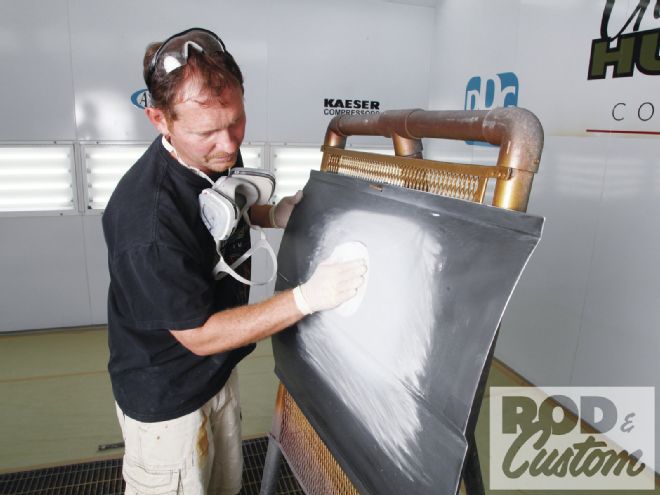
9. Once Hutton liked the surface finish he repeated the cleaning steps and immediately applied his color coat.
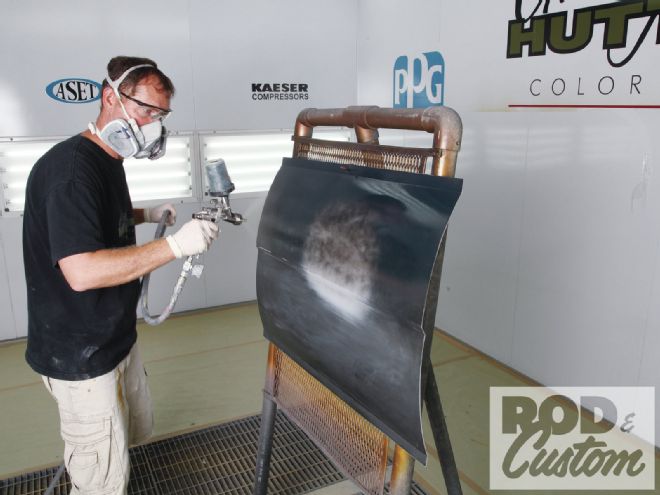
10. He applied the paint by the same procedure indicated in the waterborne-basecoat article: three light coats, each flashed off with forced-air drying. With that, the panel was ready for its clearcoat.
